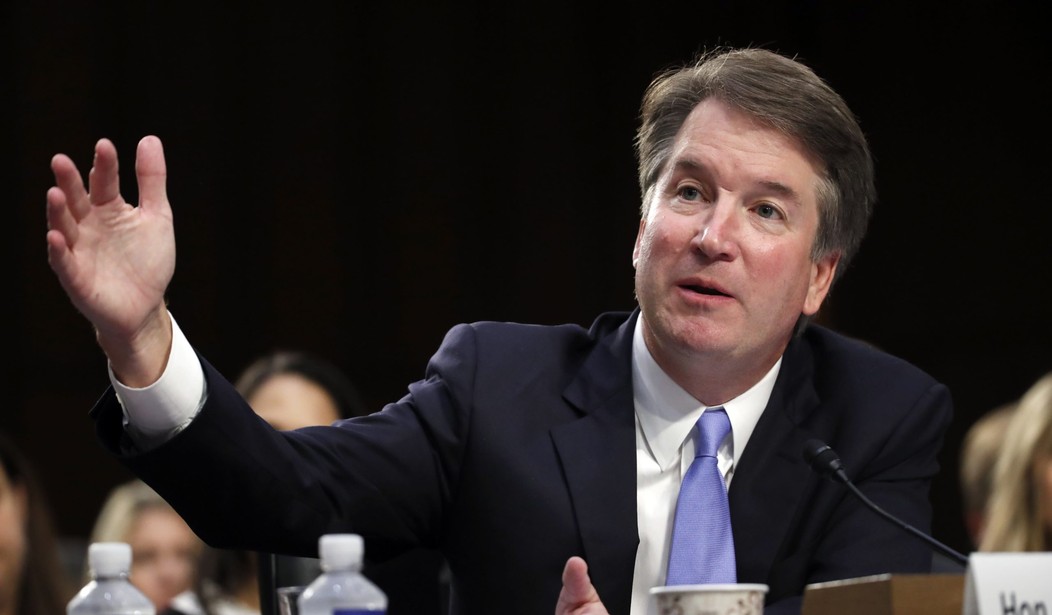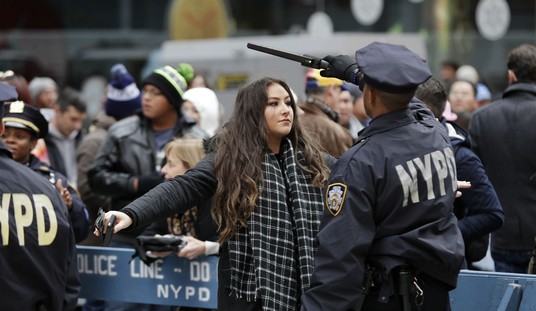In the course of three Supreme Court decisions over the past several days, Justice Brett Kavanaugh has validated the concerns held by many conservatives about his judicial style. In those three cases, Kavanaugh has sided with the liberal wing and Chief John Roberts over objections by the likes of Neil Gorsuch, Clarence Thomas, and Sam Alito.
The most obvious example is Monday’s decision to dismiss a case the Supreme Court previously agreed to hear in December. Three handgun owners in New York City challenged a city rule that prohibited them from bringing their guns outside the city. The city, wary of facing an unfavorable SCOTUS decision, changed the regulation. Kavanaugh sided with the majority in a 5-3 vote that the case had been made moot, and didn’t need to be heard.
Zachary Evans wrote at National Review:
Conservative justices Samuel Alito, Clarence Thomas, and Neil Gorsuch wrote in their dissent that the case should not have been dismissed.
“By incorrectly dismissing this case as moot, the Court permits our docket to be manipulated in a way that should not be countenanced,” the justices wrote. Lawyers for the plaintiffs had argued that the case should not be dismissed because the city changed its regulation due to fears that the Supreme Court would use the case to restrict broader gun control measures.
Gun rights advocates had initially hoped the court’s conservative majority would tip the case in their favor.
“I believe it will change the way the Second Amendment is applied to everyone who owns a gun in the country,” Romolo Colantone, a resident of Staten Island and one of the plaintiffs in the case, said in December 2019.
There doesn’t seem to be a rationale for a textualist, originalist justice to side with the majority to dismiss. Nothing now stands in the way of New York City, or any other jurisdiction, from putting that regulation back into place. That means more infringements until a new case can wend its way back to the Supreme Court, and the hope that an originalist majority will still hold at that time.
Kavanaugh took a couple of other votes in decisions released last week that indicate a tendency towards moderating a belief in originalism. One covered a clean water regulation at the EPA in which Kavanaugh “assisted” the EPA in writing a law, and the other sided in favor of precedent.
Quin Hilyer wrote about the EPA ruling:
In the case at hand, County of Maui v. Hawaii Wildlife Fund, [Roberts and Kavanaugh] joined the decision by Justice Stephen Breyer and the other three liberals to create, almost from thin air, a new rule that the Clean Water Act applies in circumstances that are “the functional equivalent” of the situations expressly listed in the statute.
Never mind that the words “functional equivalent” appear nowhere in the Clean Water Act itself. Yet, the court majority arrogated for itself the job of discerning “the statutory provision’s basic purposes,” even where the statute not only was largely silent, but actually contained language leaning in the other direction.
At issue was the longstanding practice in Maui County, Hawaii, repeatedly allowed by the Environmental Protection Agency, of injecting partially treated sewage into underground wells that in turn leach, through groundwater, to the Pacific Ocean. The Clean Water Act gives the EPA regulatory authority over the discharge of any pollutant from a “point source” into “navigable waters.” A “point source” is a “discernible, confined and discrete conveyance.” The Clean Water Act quite expressly leaves regulation of nonpoint source pollution and of groundwater to the states, rather than to the EPA.
The majority decision in this case is nothing more than activist justices writing law instead of interpreting it. Much in the same manner in which Roberts saddled us with Obamacare, this decision creates language in a law that didn’t previously exist, which in turn empowers a federal bureaucracy with more authority than intended.
I warned about Kavanaugh in my 2018 wrap-up column:
The weakest of the conservatives on the short list for SCOTUS, once confirmed he sided with the liberals on the court to deny an appeal that would allow states to defund Planned Parenthood. The decision also denied Oregon Judge Vance Day an appeal on his judicial fitness hearing over religious conscience objections. With his history of setting a precedent for Obamacare to be ruled constitutional, early indications are that he could be more Roberts than Scalia.
The third recent decision where Kavanaugh went wobbly revolved around stare decisis, or the practice of relying on precedent to form new decisions. Justice Clarence Thomas has long championed relaxing precedent in matters of constitutional interpretation, especially when precedent is obviously incorrect.
Once again, Quin Hilyer broke it down in a column at the Washington Times:
Kavanaugh’s analysis gets dicey, though, when outlining conditions for ignoring stare decisis in constitutional (not statutory) interpretation. To do so, he rightly said, requires “special justification” or “strong grounds.” The question is, what sorts of things qualify as “special” or “strong?”
Kavanaugh recommended three criteria. The first, he said, is if “the prior decision is not just wrong, but grievously or egregiously wrong.” The second is if “the prior decision caused significant negative jurisprudential or real-world consequences.” The third is if overruling the decision would not “unduly upset reliance interests.” (“Reliance interests” is legal jargon for economic or legal expectations that have become so embedded that the legal system would experience too much upheaval if those expectations are changed.)
“Taken together,” Kavanaugh writes, “those three considerations set a high (but not insurmountable) bar for overruling a precedent, and they therefore limit the number of overrulings and maintain stability in the law.”
The problem lies in the words “taken together.” The rest of his opinion suggests that precedent should be overturned only if all three conditions are met. Surely, this standard goes too far in protecting even erroneous precedent.
Kavanaugh wrote this in a separate opinion in which he voted with the majority in Ramos v Louisiana to reverse precedent and nullify non-unanimous jury convictions. Interestingly, that decision potentially could “unduly upset reliance interests” in that potentially hundreds of inmates could be released in Oregon and Louisiana. Oregon only changed its law in 2019, leaving Louisiana as the only state that still used the practice of non-unanimous votes to convict by juries. Kavanaugh has signaled that he will place a very high bar indeed in considering future decisions to vote counter to precedent.
These three decisions, to vote to dismiss the New York City gun case, to create new powers for the EPA not mentioned in the statute, and to rely so heavily on precedent, indicate that he is as feared – more Roberts than Gorsuch. Certainly an improvement over the ultra liberal Anthony Kennedy, but not to be trusted as a strict originalist vote on the Supreme Court.
Jeff Reynolds is the author of the book, “Behind the Curtain: Inside the Network of Progressive Billionaires and Their Campaign to Undermine Democracy,” available now at www.WhoOwnsTheDems.com. Jeff hosts a podcast at anchor.fm/BehindTheCurtain. You can follow him on Twitter @ChargerJeff.
Editor’s Note: Want to support PJ Media so we can keep telling the truth about China and the virus they unleashed on the world? Join PJ Media VIP and use the promo code WUHAN to get 25% off your VIP membership.










Join the conversation as a VIP Member